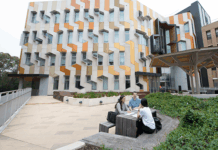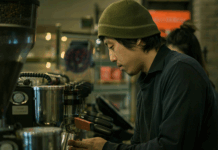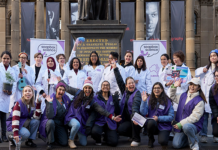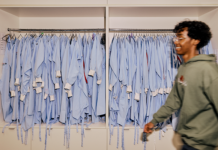It’s important in our physical interactions with others that we know what’s appropriate and what isn’t. Inappropriate physical contact is any unwanted or unwelcome touch that makes the recipient feel uncomfortable, even if it seems harmless to you. Sometimes the inappropriateness might refer to the setting you are in, for example, kissing someone at work or in a classroom.
Take note of a person’s body language and social cues. Something like a congratulatory hug to a classmate might be accepted by one person but might be completely inappropriate to another. If in doubt, just ask, otherwise it’s probably a good idea not to touch at all.
As the above example describes, unwanted physical touching can range from seemingly small and not always sexual in nature, like a hug or a handshake, to serious sexual harm.
What isn’t appropriate?
Here are some more general examples of physical contact that might be inappropriate:
- Shaking someone’s hand anyway when they have declined your request to shake.
- Giving someone a hug when they’ve said no.
- Patting someone on the back.
- Slapping someone on their buttocks.
- Casual lingering contact, for example a hand on a co-workers shoulder.
- Brushing up against someone.
- Non-consensual sexual behaviour; kissing, touching, rubbing, grinding and stroking.
- Blocking someone’s movement/path.
- Physical assault, for example punching someone.
- Attempted rape or rape.
Maybe it was brushed off as a one-time event, or maybe it didn’t stop. Maybe it happened once, but the conduct was severe; it doesn’t matter. However, if it is inappropriate, you can find help, advice, and support. See the bottom of this article for support options on campus and beyond.
What does it look like on campus?
Below are some examples of how inappropriate physical contact can manifest on campus.
Remember, we use the AIDED Model of Bystander Action at La Trobe, and it can help guide you to decide what action to take to intervene safely. Read more about it here in the article about Sexual Harm.
A – Assign responsibility to another person
I – Intervene indirectly
D – Directly intervene by stepping in
E – Keep evidence of the incident
D – Divert the harm away from the target
Example 1
You’re on a crowded train on your way to Uni and you see a man pressed up against a young woman, who is clearly too close even for the circumstances. You can’t see his hand which is wedged in between him and the woman. The woman looks very uncomfortable.
What to do?
Take a look at this video by UN Women Asia Pacific that showcases this exact scenario.
As you can see here, they use diversion tactics like distraction to interrupt the perpetrator’s actions. They also directly confront the perpetrator by addressing the action directly by letting them know it’s not ok. The bystanders also indirectly intervene, offering support to the woman by drawing her into their circle. You could also use your phone to record the incident and the perpetrator to keep as evidence.
Example 2
While getting off the bus on campus, you see someone following a student who grabs at their wrist, saying they’re attractive. They ask them to leave them alone, pulling away, they eventually let go.
What to do?
- Directly intervene by telling the person who grabbed the student that it wasn’t ok.
- Indirectly intervene by asking the victim if they are ok, offering support.
Example 3
You and a friend are lining up for a drink at an event when someone behind your friend pinches their bum; when your friend turns around, they wink and press their body closer.
What to do?
- Assign responsibility by reporting the incident to security.
- If confident to do so, directly intervene by telling the perpetrator that the contact is inappropriate and unsolicited.
- Divert the perpetrator’s attention, distracting them and moving them away from your friend.
- Indirectly intervene by supporting your friend, asking if they’re ok and need further support.
Example 4
You see a student in your class ask another student for a hug; they say no, but they hug them anyway.
What to do?
- Directly intervene by letting the student know that the contact is inappropriate; the other student said they didn’t want a hug, even though they thought it was harmless.
- Indirectly intervene by asking if the student wants further support. For example, it may have been a one-time event, or they may want help to report it if is a reoccurring event.
Example 5
You see a student on campus slap the bum of another student who clearly wasn’t engaging with them. It looks like the first student thought it was in jest, but the student who was slapped looks upset.
What to do?
- Indirectly intervene by asking if the slapped student wants any help as that looked inappropriate.
- Directly intervene by talking to the other student. Maybe you know them, maybe you don’t, but explaining how the behaviour is inappropriate and unwanted might stop them from doing it again.
- Assign responsibility by reporting the incident to Safer Community.
Support
If you witness or experience any inappropriate physical contact and you need further support and advice, La Trobe has a variety of safety and security options you can contact depending on your situation, both on and off-campus. For a full list of extensive services, have a look at this article.
Reporting and disclosing within the University
In circumstances of unwanted sexual advances, or any unacceptable behaviour, consider the following options.
In an Emergency
- Call police or emergency services – (24 hours) Triple Zero’ 000′
- If on-campus then call Campus Security – (24 hours) 03 9479 8888. They need to be aware of the incident to let emergency services on campus if required and can assist until their arrival.
Safer Community
Contact Safer Community to disclose or report an incident.
It is a free, confidential* support service you can contact if you experience or witness concerning, threatening, inappropriate or uncomfortable behaviour. This behaviour can occur on-campus and off-campus, such as on public transport or in the home.
Safer Community provides expert advice and information. They also offer you options and referrals to help resolve your concerns to keep you and other safe.
*Refer to Safer Community website for a full privacy and confidentiality statement and limitations.















